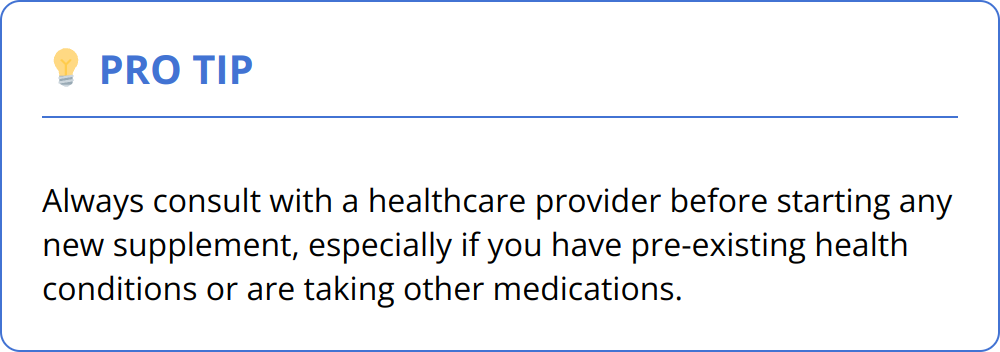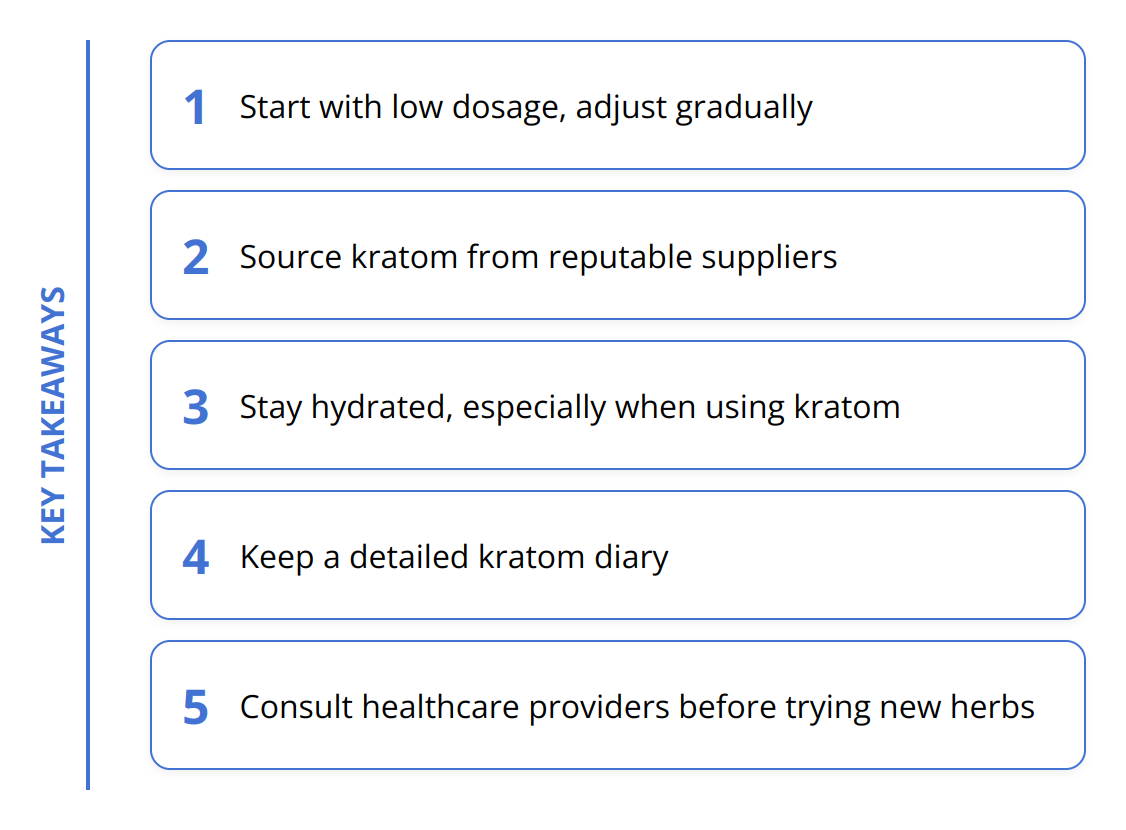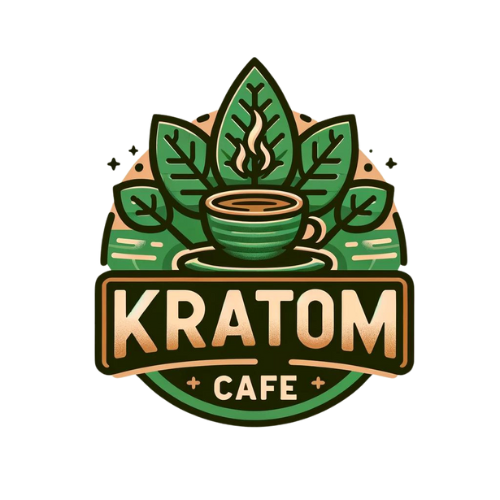Pain management is a journey that many undertake in search of relief and comfort. With an increasing interest in natural remedies, herbal solutions offer a promising path. We at Kratom Cafe believe in the power of nature to provide effective alternatives to pharmaceuticals. This guide explores how to harness herbal solutions, including kratom, for pain management.
Herbal Pain Relief Insights
The shift towards natural remedies has spotlighted herbal solutions as a powerful alternative for managing pain. Unlike pharmaceuticals, which often come with a risk of dependency and a plethora of side effects, herbal solutions work in harmony with the body, supporting natural healing processes and offering a holistic approach to pain management.
Overview of Herbal Pain Relief
Herbal pain relief comes from plants known for their analgesic (pain-relieving) properties. These natural remedies have been used traditionally across the world for centuries, offering a testament to their efficacy. Today, backed by emerging research and a better understanding of herbal pharmacodynamics, these ancient remedies are re-emerging as preferred choices for those seeking relief from chronic or acute pain without the heavy toll of synthetic drugs.
Benefits of Using Herbal Solutions
The appeal of herbal solutions lies not only in their effectiveness but also in their safety profile and the broader benefits they offer. Here are a few key advantages:
-
Lower Risk of Side Effects: Many herbs have fewer and less severe side effects compared to prescription medications.
-
Reduced Dependence Risk: Herbs generally have a lower risk of dependence and addiction.
-
Holistic Healing: Herbal remedies often support overall well-being, not just pain relief.
-
Cost-Effectiveness: Many herbal solutions are more affordable than prescription medications.
Common Herbs for Pain Management
Several herbs stand out for their pain-relieving properties:
-
Turmeric: Contains curcumin, a compound with strong anti-inflammatory and antioxidant properties. Perfect for joint and muscle pain.
-
Ginger: Another powerful anti-inflammatory, effective at soothing stomach pains and menstrual cramps.
-
Kratom: A Southeast Asian herb providing relief from pain, anxiety, and depression. Kratom interacts with opioid receptors but without the high risk of addiction typical of opioids. For specific guidance on using kratom for pain, readers can explore resources like kratom for pain relief practical tips and natural opioid alternatives guide.

.
Incorporating these herbs into your pain management strategy can offer relief while minimizing the reliance on pharmaceuticals. When considering herbal solutions, it’s essential to consult a healthcare provider, especially for those with existing health conditions or those taking other medications, to prevent any potential interactions. Additionally, sourcing herbs from reputable suppliers is vital to ensure quality and efficacy.
By choosing herbal solutions for pain management, you are not just addressing the symptom but nurturing your body’s natural healing capabilities, ensuring a path to not just pain relief but overall well-being.
Incorporating Kratom for Pain Relief
Kratom has become a notable player in the world of natural pain management. Its unique properties allow it to address pain effectively, making it a valuable addition to your herbal arsenal. Understanding kratom and how to use it responsibly can unlock significant benefits, especially for those looking to steer clear of pharmaceuticals.
The Science and Strains of Kratom
Kratom is a natural herb from Southeast Asia, known scientifically as Mitragyna speciosa. It works by interacting with opioid receptors in the brain, which can lead to pain relief, mood enhancement, and increased energy, depending on the dose. This action does not equate to opioid drugs, as kratom does not produce the same high level of addiction or risk.
The effectiveness of kratom in managing pain varies with the strains, each tailored to different needs:
-
Red Vein Kratom: Best for chronic pain as it’s the most effective for pain relief.
-
White Vein Kratom: Ideal for those needing a mild energy boost along with pain relief, suitable for day-time use.
-
Green Vein Kratom: A balance between the two, offering pain relief and energy, perfect for those needing steady pain management throughout the day.
Choosing the right strain is critical in managing the type of pain you’re experiencing. For instance, chronic pain sufferers might find red vein kratom more beneficial, while those with intermittent pain could benefit from the balanced effects of green vein kratom.
Finding Your Ideal Dosage
Determining the right dosage of kratom is essential for maximizing its pain-relieving benefits while minimizing side effects. Dosage can vary significantly based on several factors including body weight, the intensity of pain, and individual tolerance. Here are some general guidelines to get started:
-
Start small: Begin with the lowest recommended dose for your chosen strain, usually around 1-2 grams.
-
Listen to your body: Pay attention to how your body responds and adjust your dosage accordingly. If you do not feel the desired effects after 30 minutes to an hour, you might consider taking a slightly higher dose next time.
-
Avoid increasing too quickly: Gradually adjust your dose. Jumping to a high dose too quickly can lead to unpleasant side effects.
For detailed guidelines on finding your perfect kratom dose, exploring resources like kratom dosage guide can be incredibly helpful.
Practical Tips for Incorporating Kratom into Your Routine

-
Quality matters: Always source your kratom from reputable suppliers to ensure you get a pure product.
-
Stay hydrated: Kratom can cause dehydration, so increase your water intake.
-
Keep a kratom diary: Track your doses and how you feel afterwards to find your optimal dosage and strain.
-
Consult healthcare providers: Especially if you’re on other medications or have underlying health conditions.
By understanding kratom’s capabilities and applying these practical considerations, you can effectively incorporate this natural solution into your pain management strategy. Remember, while kratom can offer relief, it’s part of a holistic approach that includes lifestyle adjustments and consulting healthcare professionals.
Safe Use of Herbal Pain Solutions
When embracing herbal remedies such as kratom for pain management, safety is paramount. It’s not just about seeking relief but doing so in a way that respects your body’s limits and works in tandem with any existing treatments. Here are focused strategies to ensure you’re using these natural solutions safely and effectively.
Consulting Healthcare Providers
Before adding any herbal solution to your regimen, talking to a healthcare professional is essential. They can provide insights on potential interactions with current medications and advise on the suitability of certain herbs given your health history. For instance, while kratom is heralded for its pain-relieving qualities, it may not be suitable for everyone, making professional guidance indispensable.
Starting with Low Dosages
Every individual reacts differently to herbal treatments. Starting with a low dosage allows your body to adjust gradually, minimizing the risk of unwanted side effects. If you’re exploring kratom, beginning with the smallest effective dose and incrementally increasing it if necessary can help you gauge its impact. This cautious approach prevents the likelihood of negative reactions and helps identify the optimal dose for pain relief.
Recognizing and Managing Side Effects
Even natural remedies can have side effects. Recognizing these early on enables you to adjust your approach, whether it’s reducing the dosage or ceasing the herb altogether. Common side effects to watch for include nausea, dizziness, or any unusual symptoms following herbal intake. Staying hydrated, especially with herbs like kratom which can lead to dehydration, is a straightforward measure to mitigate some side effects.
Additionally, maintaining a detailed log of your herb consumption, alongside any side effects and benefits noticed, can act as a valuable tool in managing your herbal pain relief journey. This data becomes incredibly useful during follow-up consultations with your healthcare provider.
Practical Tips:
-
Always verify the quality of herbal products
-
Increment doses slowly, monitoring body’s response
-
Document effects and side effects meticulously
-
Stay informed about the latest research and recommendations on herbal remedies like kratom

By grounding your use of herbal solutions in these practices, you ensure a safer path to pain management. Herbal remedies hold immense potential for natural pain relief, provided they’re used thoughtfully and under professional advice. For those considering kratom as part of their pain management plan, resources like kratom for opiate withdrawal provide valuable insights into responsibly harnessing this potent herb.
Embarking on a herbal pain management journey requires careful consideration and respect for the potency and variability of natural remedies. By adhering to these guidelines, individuals can maximize the benefits while minimizing risks, paving the way for a more balanced and health-conscious approach to managing pain.
Wrapping Up
Exploring herbal solutions for pain management opens a world of possibilities that extend beyond conventional pharmaceutical methods. These natural remedies, including kratom, embody the essence of holistic healing, offering pain relief, reduced side effects, and a lower risk of dependence. At Kratom Cafe, we champion the use of these herbal solutions as part of a balanced approach to health and wellness. By integrating herbs like kratom into your pain management plan, you not only address the symptoms but also contribute to overall well-being.

The journey towards effective pain relief using herbal solutions demands responsibility and diligence. As keen advocates for the informed use of kratom and other herbal pain relievers, we stress the importance of:
-
Consulting healthcare professionals to ensure safety and efficacy, especially for those with existing conditions or on medication.
-
Starting with low dosages and tuning into your body’s response to find the optimal dose that provides relief without adverse effects.
-
Prioritizing quality by choosing reputable sources for your herbal products, ensuring purity and potency.
The path to discovering the full benefits of herbal remedies, including kratom, is ongoing. Research continues to evolve, providing deeper insights into how these natural solutions can be harnessed effectively for pain management. We encourage our readers to remain curious, informed, and open to learning more about the potential of these remedies.
As you consider integrating kratom or any herbal remedy into your routine, remember that information is power. For further reading and resources on using kratom responsibly and effectively, visit us at Kratom Cafe. Our platform offers a wealth of information on kratom’s properties, usage guidelines, and the latest research, supporting you in making informed decisions about your health and pain management strategies.
In embracing herbal solutions for pain, you’re not only taking a step towards natural healing but also joining a community of individuals committed to improving their quality of life through holistic means. Let us be your guide on this journey, providing the support and knowledge you need to navigate the world of herbal pain relief with confidence and care.


Leave a Reply